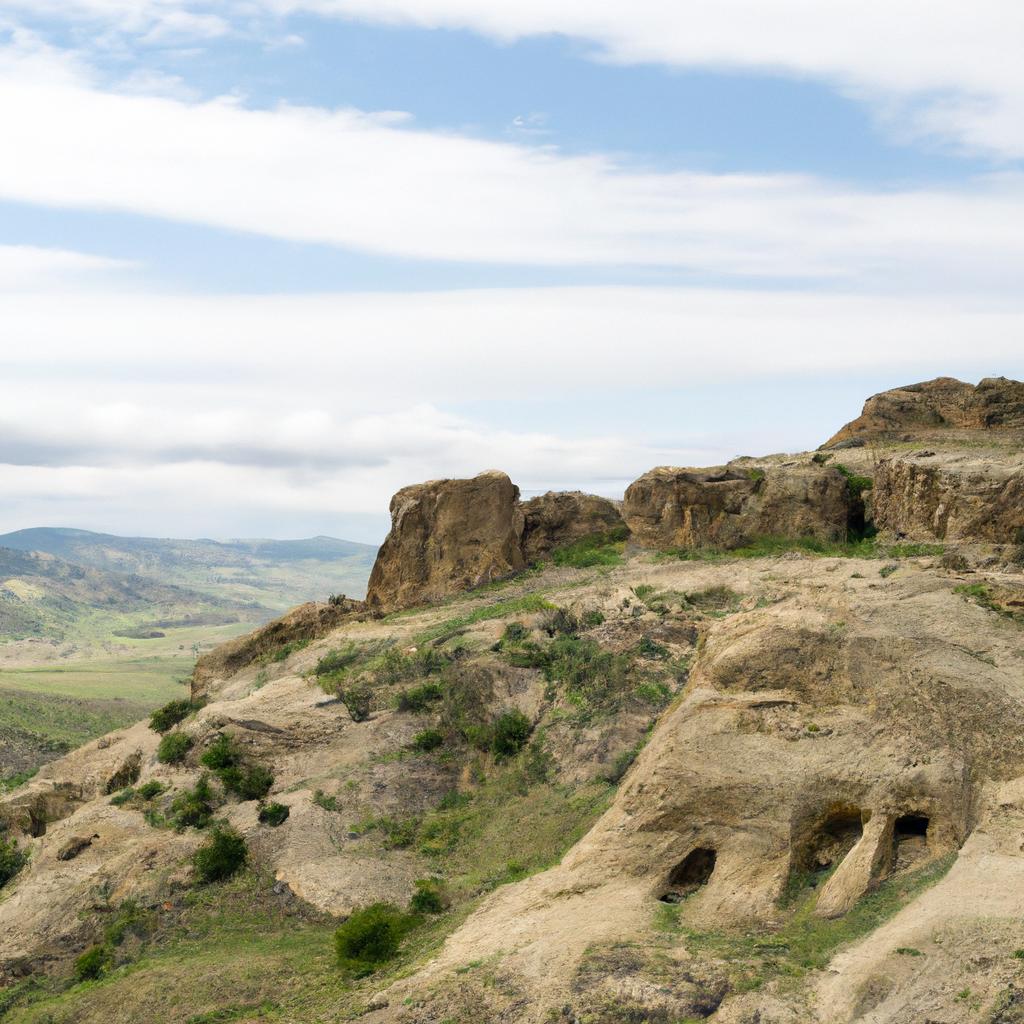Georgia’s rich culture and history are beautifully showcased through its diverse architectural wonders. Among these gems is the Davit Gareja Caves, an awe-inspiring complex of monasteries, churches, and caves nestled in the southeastern region of the country, near the border with Azerbaijan. Discover the unique architecture, religious significance, and breathtaking vistas that await at this historical marvel.
Unveiling the Historical Background
The roots of the Davit Gareja Caves can be traced back to the 6th century, when St. David Garejeli, one of the thirteen Assyrian Fathers who arrived in Georgia to spread Christianity, founded this remarkable complex. Originally serving as a place of solace and meditation for the monks, the caves grew in size and importance over the centuries. During the Middle Ages, the complex flourished as a center of religious and cultural activity, attracting pilgrims and scholars alike. With its strategic location along the Silk Road, the caves also became a hub of trade and commerce.
Despite enduring invasions and wars throughout its history, the Davit Gareja Caves have stood the test of time, remaining a significant cultural and historical landmark in Georgia.
Unraveling the Significance
Step into the Davit Gareja Caves, and you’ll immerse yourself in the essence of Georgian history and culture. This complex played a pivotal role in the development and spread of Georgian Orthodox Christianity, nurturing notable scholars and artists who contributed to the growth of Georgian literature, music, and art.
As a place of refuge during times of conflict, the caves also held military importance. Countless battles were fought in and around the complex, highlighting its strategic position near the Azerbaijan border.
Today, the Davit Gareja Caves continue to captivate visitors from around the world, offering a glimpse into the stunning architecture, the rich tapestry of Georgian history and culture, and the breathtaking natural beauty of the region.
Marveling at the Architecture
The architectural marvel of the Davit Gareja Caves seamlessly blends elements of Georgian, Armenian, and Byzantine styles. Carved into the rocky hills, the complex comprises over 15 monasteries, hundreds of cells, and numerous churches and chapels.
What makes these caves truly remarkable is their use of natural materials such as stone, clay, and wood. Employing a combination of carving and construction techniques, the structures have withstood the test of time, displaying remarkable resilience.
The integration of the complex with the surrounding landscape adds to its allure. Visitors are treated to awe-inspiring views of the rolling hills and valleys, creating a harmonious union between nature and architecture.
Embracing the Religious Importance
The Davit Gareja Caves hold an esteemed position within Georgian Orthodox Christianity. Many of the monasteries and churches within the complex are still active today, exemplifying the enduring spiritual significance of the site. Rituals and ceremonies, including Easter celebrations and pilgrimages, continue to thrive within these ancient walls, attracting visitors seeking spiritual guidance or wishing to pay homage to the monks who once inhabited this sacred space.
Beyond its religious importance, the Davit Gareja Caves symbolize Georgia’s rich cultural heritage and identity. The complex stands as a powerful reminder of the nation’s history, showcasing the profound influence of religion and culture in shaping its destiny.
Embarking on a Cultural Adventure
Attracting visitors from across the globe, the Davit Gareja Caves have become a popular destination for tourists in Georgia. Explore the myriad caves, churches, and monasteries, each boasting its unique architectural marvels and design. Admire the stunning frescoes and murals that depict scenes from Georgian history and religion.
For those seeking outdoor adventure, the complex’s location in the Gareja Desert offers ample opportunities for hiking and exploration. Trails wind through the desert, leading visitors to the summits of the hills within the complex, which offer panoramic views of the surrounding area.
To make the most of your visit, be sure to come prepared with comfortable walking shoes, sunscreen, and plenty of water. When entering the churches and monasteries, it is essential to dress modestly and respect the religious significance of the site.
Preserving a Cultural Heritage
Preserving the Davit Gareja Caves presents a significant challenge, given their remote location in an arid region of Georgia. The complex is also threatened by illegal mining and vandalism, which have caused considerable damage to the caves and their surroundings.
Addressing these challenges, the Georgian government has launched various preservation initiatives, including the installation of security cameras, the creation of a visitor center, and the establishment of a protected area surrounding the complex.
Local communities and international organizations are also actively raising awareness about the importance of preserving the complex. By promoting responsible tourism and encouraging visitors to respect the cultural and religious significance of the site, these groups aim to ensure that the Davit Gareja Caves continue to stand as a testament to Georgia’s rich heritage for generations to come.
Visit TooLacks to learn more about Georgia’s historical marvels and plan your journey to the Davit Gareja Caves.



